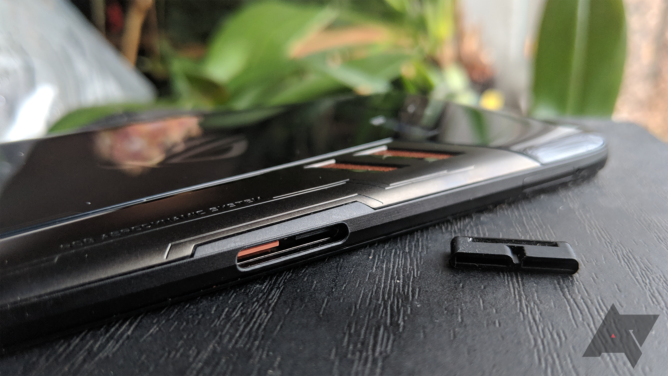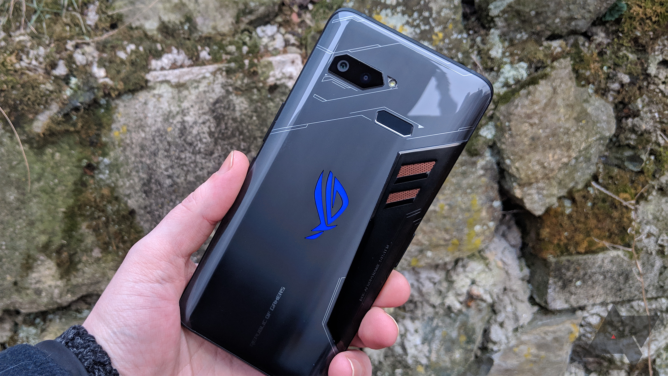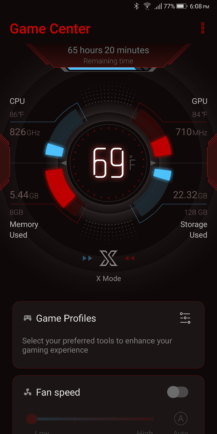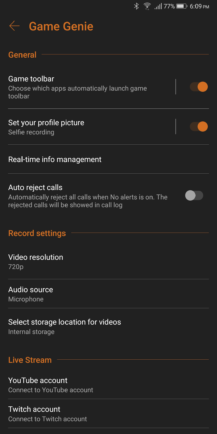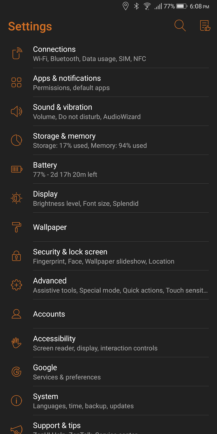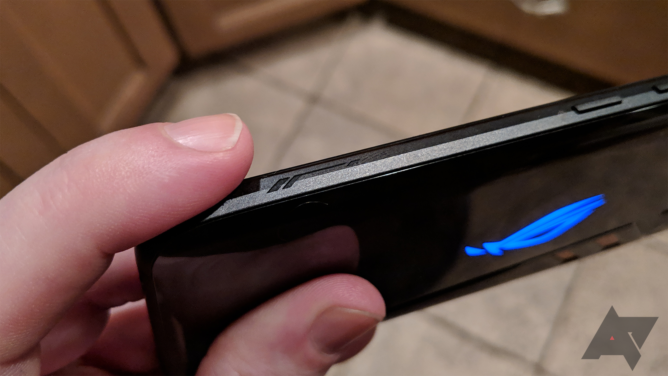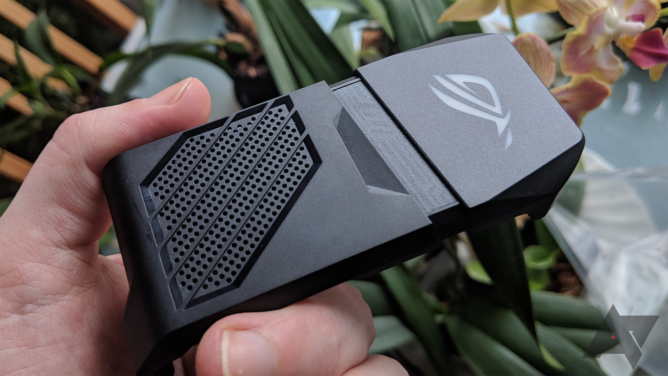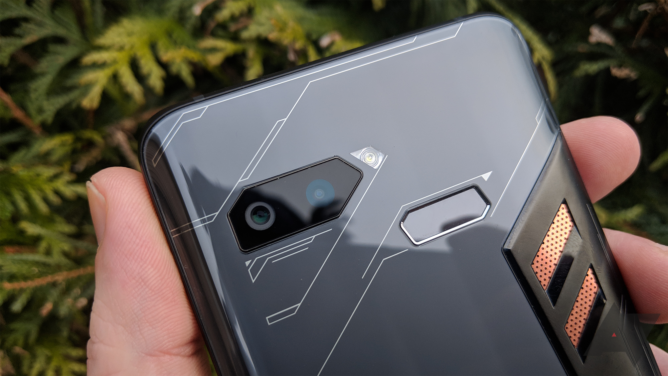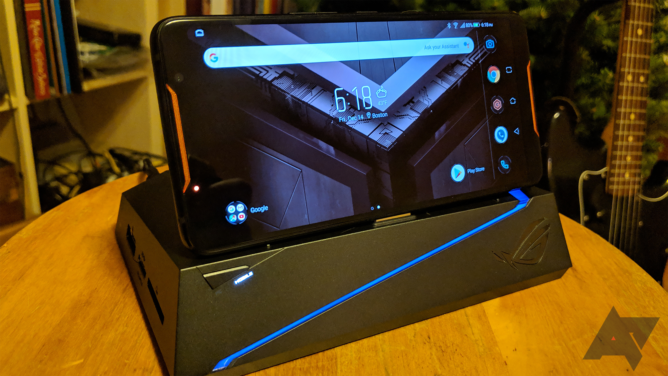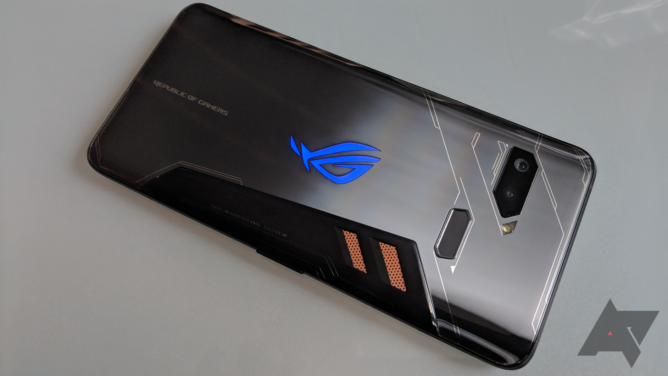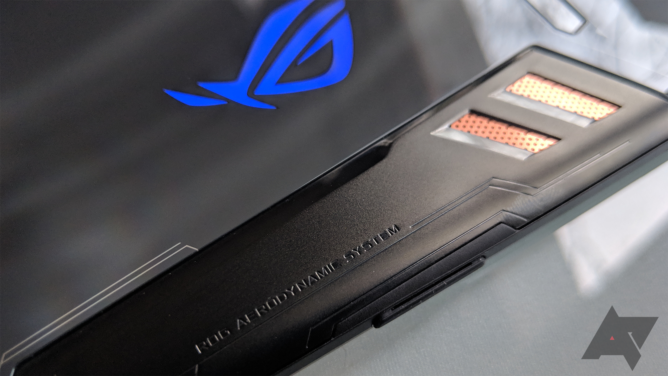Smartphones have achieved the ridiculous level of market penetration they have thanks in no small part to their universal utility: While in the not-too-distant past you might have carried around a separate MP3 player, game console, PDA, flashlight, and any number of other accessories in addition to your cell phone, having all this functionality baked into one device is what helps make the general-purpose smartphone so appealing. But lately we’ve been seeing the emergence of more specialized phones, and easily the most visible segment there has been hardware targeted at gamers. Today we’re looking at just how successful one of those efforts has been, as we review the ASUS ROG Phone.
Presented under the ASUS Republic of Gamers sub-brand, the phone is a marked departure from a company long associated with less ambitious, affordably priced hardware. And while we fully expect ASUS to keep on producing such ZenFone handsets, it’s nonetheless very exciting to see what the manufacturer can do when it pulls out all the stops, aiming to deliver a feature-rich, no-expense-spared gaming phone.
Design, hardware, what’s in the box
Somewhere along the line, “gaming” hardware developed its own aesthetic: dark materials and harsh angles, offset by blooms of colorful, rainbow lighting. You see it in PC towers, you see it gaming mice, and the ROG Phone fully embraces this same design language. While models like the Razer Phone 2 danced around the edges of that scheme, the ROG Phone throws traditional phone-design restraint to the wind.
We see hints of this around front, with elements like the phone’s angular, copper-colored stereo speaker grilles, but it’s the back panel that really takes this look and runs with it, featuring a mix of glass and composite materials, circuit-board-esque “traces” dancing across the panel, a six-sided fingerprint scanner, and a glowing RGB LED ROG logo dead center.
Have fun feeling around for the off-center USB port when you’re not looking.
It’s not just the look of this phone that’s unusual, though — from the features present to the layout of common elements, the ROG Phone is one handset clearly walking to the beat of its own drum. For one, the phone features a rare off-center USB port, with the primary USB Type-C interface shifted over to the left side of the handset’s bottom edge (opposite a 3.5mm headphone jack on the right). There’s nothing capital-w wrong about that placement, but it requires that you much more attention when plugging in to charge.
You’ll notice we said “primary” USB port there, as the ROG Phone also sports a unique side-mounted interface designed mostly for use with accessories — and chief among those is the snap-on AeroActive Cooler that comes with the phone. The connection looks like two Type-C ports next to each other, with one colored ominously orange to remind you that when connecting single cables, you should use the other one.
We’ll talk more about the Cooler soon, but the expansion port itself is a little oddly designed. It’s normally covered by a rubber cap when not it use, and probably for good reason: the broad side-by-side port layout is pretty exposed and sure looks eager to fill up with dust and debris. In a move that’s equal parts nice and disconcerting, the ROG Phone ships with a couple backup covers for the port. We like that we have them on hand, but their presence also seems to concede that ASUS knows we’re just going to lose them, one by one.
The ROG Phone’s expansion port (and one of the three covers it comes with).
Above that expansion interface on the ROG Phone’s left edge we find its SIM tray, and while it offers dual-SIM support, it sadly does not perform double-duty with microSD expansion. Even though ASUS offers up to 512GB storage, that’s still a disappointing oversight, especially for a phone so otherwise ideal for media consumption. But even with that omission, there’s still one very interesting trick baked into the handset’s edges: a set of three ultrasonic “buttons.”
Dubbed AirTriggers, we find two of these sensors on the top and bottom of the right edge, and one on the bottom of the left. During normal phone usage, the two bottom AirTrigger sensors pair up to act like HTC’s Edge Sense or the Pixel’s Active Edge, letting users squeeze the handset’s body to trigger customizable actions. Maybe the more interesting mode is engaged when you turn the ROG Phone on its side for some landscape-orientation gaming, and the two right-edge AirTriggers efficiently become console-style L and R buttons. We’ll circle back to how well they work in just a moment.
ASUS isn’t trying any notch fanciness with the ROG’s screen, and that’s just fine. When your focus is on giving gamers the best visuals possible, there’s no reason to let bezel-vanity get in the way of of things. Instead we get a nice, big, rounded-corner 6.0-inch AMOLED panel. Viewing angles are alright, maintaining color accuracy until about 45 degrees off-center, but the real star here is the 90Hz refresh support, making the screen feel vibrant and responsive.
Overall the phone’s solidly built, feels good to handle, and while its design may not be universally appealing, we can’t deny that this thing just oozes style. Especially once you configure the rear logo with the color-changing, pulsing display of your choosing, the ROG Phone becomes a real attention-grabber. The only issue we’d characterize as an outright mistake is the utter lack of any kind of water resistance. For the phone’s intended uses, that falls short of being a deal-breaker, but it’s still a safety net we’d strongly prefer to have when we can get it.
All told, the ROG Phone ships with its AeroActive Cooler, the HyperCharge adapter with USB Type-C cable, a couple replacement expansion port covers, SIM tool, and its documentation — no headphones.
Software, performance, battery
Normally I seek out phones with interfaces that trend towards stock Android as closely as possible, but the more I use the ROG Phone with its customizations and intricate setup options, the more I’m liking what ASUS has put together here with its ZenUI.
Unsurprisingly, the highlight of the software is on gaming features, and the key to accessing most of those is the phone’s Game Genie interface, a side panel that can be pulled out from the screen edge when needed. Those controls offer quick access to shutting off distracting notifications, and provide tools for easily recording or streaming gaming sessions.
This is also where you tap into the power of the AirTrigger ultrasonic buttons. Since games aren’t just going to recognize those controls by default, you can assign them to on-screen buttons by dragging circles over those UI elements you want to tap. Then when you touch the associated AirTrigger, the game responds just as if you’d tapped that “shoot,” “jump,” or whatever button on the phone’s screen. The whole system works quite well, with minimal latency and responsive haptics. We just wish the AirTriggers themselves were spaced a little closer to the handset’s corners, requiring less of a reach.
One of the phone’s three edge-mounted AirTriggers.
Another major component of this game-centric interface is the Game Center, accessible both directly and through Game Genie. Here you can get an overview of phone stats like available RAM, system temperature, and CPU and GPU speeds. You’ll also find controls for adjusting the appearance of the rear RGB LED logo, setting up profiles for specific games, and controlling the behavior of the AeroActive Cooler fan. And front and center there’s a prominent “X Mode” button claiming to boost gaming performance.
With 8GB of RAM and a Snapdragon 845 running at up to nearly 3GHz, it’s no shock that the ROG Phone is a performance beast. X Mode is supposed to take full advantage of that by freeing up RAM and letting the SoC run wild, and in our tests it did result in a measurable increase in speed. But it also gets the phone running a bit hot — AeroActive Cooler to the rescue?
Well, maybe not. When you pop on the Cooler it’s intended to use its fan to wick away excess heat from the phone’s back panel. Even though using it covers up the ROG logo, the Cooler’s got it own color-changing insignia on board, and adds a second headphone jack for convenience. You can manually set the fan speed in the Game Center, or let auto mode do the work for you.
That sounds great, but we found the Cooler to not quite live up to expectations, and in some tests even saw the phone run hotter with it attached. Depending on how you hold the phone, your hands may get in the way of its vents, and we worry the contact between Cooler and phone just isn’t strong enough to draw away enough heat. That said, maybe it just needs some more aggressive fan-speed management.
We wish the clip-on AeroActive Cooler did a better job actually cooling the phone.
While running a lot of games at full performance will take a toll on battery life, the ROG Phone is nicely equipped to handle them. The 4,000mAh battery will keep the handset operating at lower usage levels for days between charges, and the included ASUS HyperCharge adapter really can refresh that charge quickly, topping things off in well under an hour.
Camera
For a phone that doesn’t really emphasize its cameras as a main selling point, the imaging capabilities of the ROG Phone are all sorts of satisfying. We’ve got a 12MP main camera with OIS, joined by a 8MP 120-degree wide-angle shooter. And up front there’s an 8MP selfie cam.
While the software’s nothing out of the ordinary, it manages to produce some nicely balanced, well-exposed shots. The main 12MP camera is more successful than the wide-angle option, but even that’s not bad. The depth-effect portrait mode is functional though suffers from the same sort of edge-recognition glitches we always see; the front-facer makes its own attempt at bokeh with slightly less success.
When it comes to basic point-and-shoot operation, though, the ROG Phone’s camera is very much up to the task. So long as you avoid catching the phone’s glowing rear logo in any reflections, you’re not going to run into any major trouble. It’s not so good that we’d recommend ASUS’s phone solely for its camera, but it’s one of the device’s positive attributes.
Mobile Desktop Dock
ASUS offers a number of accessories specially crafted for the ROG Phone, and in the process of our review we took a look at the Mobile Desktop Dock. This unit acts as a landscape-orientation cradle for the handset, interfacing through the same side port as the Cooler, and adds a ton of new connectivity options.
Those include an Ethernet port, a bunch of USB 3.1 ports, HDMI and Display port connections, and even an SD card slot. You don’t need to dedicate any hardware to this setup, either, as you can connect your monitor and USB input devices via pass-through cables to your PC, letting you switch them over to the ROG Phone only when docked.
While we didn’t spend a boatload of time using the handset in this mode, our impressions so far are positive, especially in terms of the interface — you can customize keyboard keys for game input quite similarly to how AirTriggers are set up, helping with titles not designed for keyboard support. The software’s also smart enough to swap between screen mirroring and using the phone’s display for a status panel.
The Mobile Desktop Dock would be a nice addition to your ROG Phone setup, were it not for the prohibitively high $230 price tag. Gaming on a big monitor and with proper peripherals is nice, but we’re not sure it can demand this steep of a premium.
Should you buy it?
Yes. This doesn’t make sense as a daily driver for your average smartphone user, but if you’re the type of person who spends more money on new GPUs than health care, whose PC is outfitted with more LEDs than a Christmas tree, and whose mouse has enough protrusions and sharp corners to count as a weapon, you probably already recognize the ROG Phone as being marketed directly to you.
And you know what? ASUS puts out a pretty solid offering for gamers looking to start treating mobile titles as seriously as those released for consoles or PCs. Granted, it’s an expensive phone, and one that has some limitations not seen in more mainstream models, but it’s also not so eccentric as to discourage you from using this as your primary device.
The performance is there, the features are there, and — again, while we realize it’s not for everyone — there’s a strong sense of design to the phone. If you can stomach the $900 price of admission, and especially if you’re willing to invest even more in accessories like the Mobile Desktop Dock, extra-screen TwinView Dock, Gamevice console controls, or the wireless-display WiGig Dock, ASUS presents a compelling solution for taking your smartphone gaming to the next level.
Buy it:
- You love gaming and don’t mind spending a lot to get the best
- For its unique, eye-catching design
Don’t buy it:
- You like your phones sleek, streamlined, and with face-filling screens
- Water-resistance is important
- You want the best value you can find in a flagship



